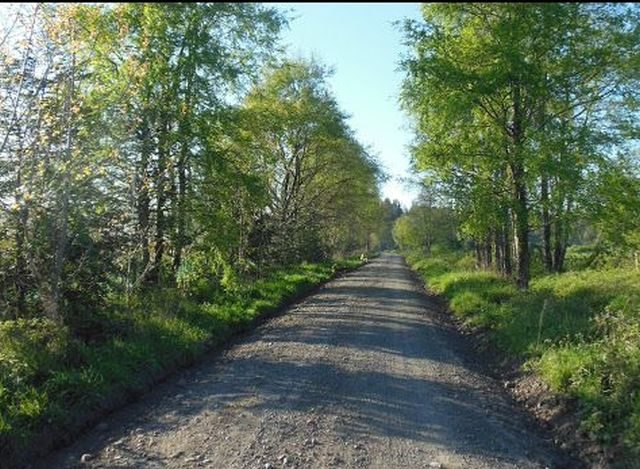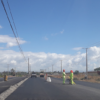Homestead Family in Patagonia – Finding Land
Homesteading in Chile has its particular difficulties that may or may not be similar to homesteading in the US
The whole concept of homesteading and living a self-sufficient lifestyle is a little foreign to most Chileans as 85% of them live in urban areas. Even out here in the farm country of the south, the concept is puzzling to our neighbors. After all,you can’t make your own Coca Cola! That’s what our neighbor said when we told her we were trying to be self-sufficient.
Many people in Chile own farms but live in the city, don’t drink the milk they produce on their own dairy farms, kill and toss the bull calves instead of eating them, and rarely have more than a day or two worth of food in the house. Though many grow a lot of their own food in gardens and greenhouses and live and eat simply, eating simply for Chileans means lots of bread. I’m not meaning to sound condescending, I’m just saying I have a different North American perspective that they don’t always understand and that’s okay!
Well, the first step in homesteading is to find your land. This, in itself, is challenging as the only place with anything close to an MLS is Santiago. Realtors are not regulated and anyone can say they are an “inmobiliaria” who knows a few neighbors who want to sell. So often they only know the properties in their own backyard. Finding property is all about who you know.The key here is to get out and meet people, talk to people and spread the word around that you are looking for property. It sure helps to know the language or bring along someone who does. Try to get a feel for the prices because many are quite willing to take advantage of a gringo.
But where in Chile? It is so large and has many different climates. I would suggest some travel to explore the different areas first. North of Santiago, which is centrally located, is very dry and includes the Atacama Desert, the driest desert in the world. That is probably not the best place for a small farm because lack of water and water rights are a problem in the dry areas. Just south of Santiago are the agricultural regions 6, and 7, with grape vineyards and lots of fruit trees. The climate is Mediterranean, meaning warm to hot, dry summers and cool, wet winters. Land here is at a premium and you pay more for productive farmland.
The 8th region is the home to large tracts of pine trees for the wood industry and the 9th region is Chile’s breadbasket grain growing area while the 10th region is dairy country. The climate of the 10th region is temperate with mild dry summers and cool wet winters. I think land in these areas is fertile, productive, and relatively inexpensive. We estimated from all the different land we looked at in the 10th region that a good price would be around $2,500 USD per acre or $5,700 USD per hectare. The 11th and 12th regions are cold, rugged, and remote and the land is probably cheap!
| This eucalyptus grove would provide a lot of firewood |
Here are a few tips on what to look for as you are looking at properties.
1 Is it big enough for our needs?
Pasture and forest: We wanted a mix – pasture for animals – you need 1.8 acres per cow/ And forest for privacy and the lumber: You need a 10 acre wood lot to be self-sufficient in firewood and firewood is the primary way to heat homes in this areas. We wanted space for a greenhouse and an orchard
2. How does the land lay?
We wanted flat areas in the pasture and some hills for interest. We like a varied landscape and didn’t want a pancake flat piece of land.
See how workable the place is – where can you put your house and the barn, the vegetable garden, chicken coop, orchard, etc.
3. Does the land drain well?
Make sure you have good drainage. If the pastures are flat, look for signs of wet grass and puddles which indicate a high water table or drainage problems
4. Is the soil fertile?
Look at the soil. Is it a deep, dark color and loamy? If you are going to live off the land you want it to be fertile. Also stones, clay or sand may make your life difficult
5. Does the property have good access?
Make sure you have access from the road. One property we looked at, you had to drive through someone else’s farm to get to it and the drive was so rutted and filled with giant puddles that we actually had to drive through the pastures and gates
6. Does it have any running or standing water?
We wanted a year-round running river or creek or pond for possible power generation or irrigation water or even drinking water. Make sure you have rights to use it. In our water-rich area this isn’t a consideration but in many areas of Chile you have to be granted the rights to use the water running through your property
7. What utilities are available? What about internet?
We have power lines running through our property but the power company wanted $5,000 just to hook up so we went off grid with solar, which we wanted to do anyway and we have no water or sewer utilities either, which was fine for us as we dug the septic system (no permits needed) and pump our own water from a spring. We had the water tested for drinkability at the local farm supply store.
Internet is a consideration also. Towns usually have high speed internet but it is not always available out in the country. Dish service can be expensive and sketchy at best. A data plan through your cellular service may be your only option.
____________________________________________________________________
Give Spanish a try and see how easy it is with our FREE Spanish Lessons
_____________________________________________________________________
| These Pellin trees are a good sign of fertile farmland |
Here are a few links to sites that list properties. I do not know and cannot vouch for either of these sites but it is interesting to see what is available.
http://www.southernchileproperties.com/
https://en.wikipedia.org/wiki/Communes_of_Chile For more information on regions and communes in Chile
Lori and Jim Dorchak
Lori and Jim, with three of their children, came t o Chile in 2012. Read more by Lori about her and Jim’s adventures homesteading in Chile at her blog at Our Chile Adventure and YouTube channel: Chile Expat Family
o Chile in 2012. Read more by Lori about her and Jim’s adventures homesteading in Chile at her blog at Our Chile Adventure and YouTube channel: Chile Expat Family

